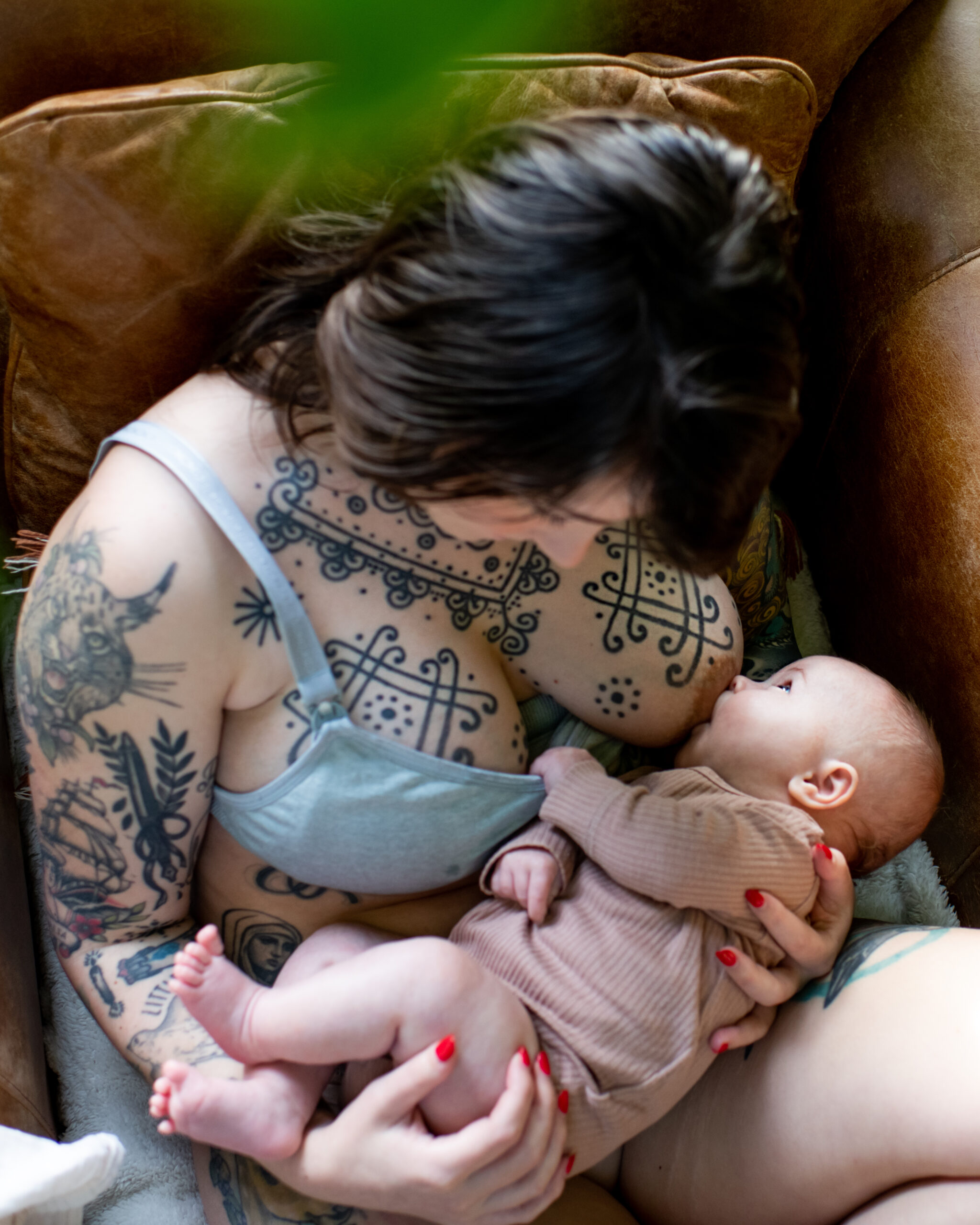Using a breast pump to express breast milk means you can keep up with the demands of your newborn’s feeding schedule – day and night.
Expressing breast milk can be especially useful for those who are experiencing issues with their baby latching, wanting to relieve engorgement, or who would like others – including their partner, friends, or family members – to be able to support them with feeds using a bottle.
Let’s run through some guidance on when and how often to pump, as well as how a breast pump can help you to maintain a good breast milk supply.
When should I start using my breast pump?
It’s recommended that you don’t start using a breast pump until after your baby is born. Once your baby arrives, it’s up to you when you start to use your pump!
Parents whose babies are born prematurely or who can’t breastfeed directly for any reason are often advised to begin pumping within six hours of birth.
If their little one is born full-term and is healthy, some parents get started with pumping right away and use their pump to kick-start their milk supply. Others wait a few weeks to start pumping and storing breast milk so that they have plenty of time to settle into a steady breastfeeding routine with their new baby.
How much breastmilk should I be pumping?
You’ll find that your early pumping sessions will yield a small amount of milk. But don’t worry, your newborn only needs small feeds at first because their stomach is only around the size of a cherry!
At one month old, a baby’s stomach is about the size of a large egg. As their tummy grows, the amount of breast milk you’re able to collect with each pump will gradually increase until you get into a steady routine of feeding and pumping.
You may not notice a huge change in the amount of breast milk you collect over time, but breast milk is clever stuff. Its composition and calorie count change and adapt alongside your baby’s development over time, so the same volume of milk is sufficient for a baby as they continue to grow.
How much milk should I pump per session?
A good breast-pumping session can last anywhere between 15 and 45 minutes, but you’ll find that each session will vary. However long you pump for, you should try to continue until the flow of your breast milk slows and your breasts feel comfortable and well-drained.
If you’re experiencing nipple pain while breastfeeding, expressing your breast milk manually or using a breast pump and then feeding your baby with a bottle can help by giving your nipples a break and time to heal.
How much breast milk can you pump per day?
It can help to think of expressing breast milk as a supply and demand process – the more you empty your boobs, the more breast milk your body will produce. You should try to pump as often as your baby is feeding. Frequent expressing as well as suckling from your baby will help your breast milk come in and evolve from highly concentrated colostrum to mature milk that’s thinner and whiter in colour.
You can aim to pump at least eight to 10 times over 24 hours, feeding your little one every two to three hours, and fitting in one pumping session during the night when you’re awake.
It’s worth bearing in mind that the number of pumping sessions you’re able to do is more important than the total amount of time you spend pumping per session. So, even if you only have a few minutes spare to pump, it’s all worth it!
What should I do if no milk comes out when I pump?
Sometimes you might find that you’re using your breast pump, but nothing is coming out. Don’t worry if this happens now and then. Even if you don’t collect any breast milk on this occasion, the act of pumping on its own sends a signal to your boobs (and brain) to produce more milk ready for next time.
How can I maintain full milk production when pumping?
Regular pumping sends signals to the body to produce more breast milk. So, as soon as you feel comfortable to do so after birth, it’s a good idea to pump from both breasts up to 10 times every 24 hours. If you can, pumping at least once between 1 am and 6 am can help to establish a good breast milk supply.
As time goes on, you can pump for longer until your boobs don’t feel full, or for two minutes after the last drop of breast milk is expressed. Try to avoid more than one five-hour period between pumps in the first two weeks.
Remember that each feeding journey is unique, and the frequency of pumping sessions and the amount of breast milk collected varies from one parent to the next. Try not to compare yourself to others and don’t hesitate to reach out to a medical professional or a lactation consultant if you need support.
Breast pumping FAQs
-
HOW MUCH BREAST MILK CAN I STORE?
The amount of breast milk you store in the fridge or freezer depends on your unique schedule and lifestyle factors like going back to work or spending some time away from your little one for whatever reason.
There’s no ‘perfect’ amount to store, but once you’re in tune with your baby’s feeding schedule, you’ll be good at judging how much milk you need.
-
CAN I INCREASE MY BREAST MILK SUPPLY WITH A BREAST PUMP?
Everyone’s feeding journey is unique, but lots of parents find that their breast milk supply increases if they use their breast pump straight after directly breastfeeding their baby.
Pumping as often as your little one feeds helps your body understand the amount of milk your baby needs. It can also help to maintain skin-to-skin with your baby or look at a photo of them while you pump.
As we’ve covered, the more your breasts are emptied, the more cues you send to your body to make new breast milk. Some parents find a method known as power or cluster pumping helpful. It’s a technique that mimics a baby’s natural cluster feeds and involves a collection of short pumping sessions with breaks in between.
-
WHEN SHOULD I PUMP IF I’M GOING BACK TO WORK?
A breast pump will come in handy if you’ve been solely feeding directly from the breast but are thinking about going back to work soon.
If you do want to use a pump, it’s a good idea to start pumping two or three weeks before you head back. That way, you’ll have plenty of time to build up a stock of expressed breast milk in storage and get used to your pump. Your baby will also have time to get to know their bottle.
Once you’re back at work, you can replace any breastfeeds you miss with pumping sessions to help maintain your baby’s feeding schedule and keep your breast milk supply strong.


